Out of the Shadows: The Life and Art of Gwen Raverat
"She had a deep love of nature, and many of her wood-engravings are celebrations of the countryside and rural life."
Gwen Raverat was born in 1885.
The granddaughter of Charles Darwin, she grew up in Cambridge, trained at the Slade School of Art in London, and became one of the most acclaimed wood-engravers of her generation.
Despite her friendship with avant-garde artists like Vanessa Bell, Raverat distanced herself from artistic movements like post-impressionism and modernism.
Instead, from a young age, she drew much of her inspiration from old masters, and especially from Rembrandt.
One of the most obvious similarities between Rembrandt’s artworks and Raverat’s engravings is the way they play with light and shadow.
For example, like the fierce light casting shadows across Rembrandt’s face in one of his most iconic self-portraits (see above), the trees silhouetted against the river in Raverat’s Horse Chestnuts at Grantchester (1937) transmit a sense of foreboding and drama.
Many of Raverat’s most celebrated wood-engravings were created in the 1930s - after the tragic death of her husband, Jacques, who suffered from multiple sclerosis and passed away at the age of just thirty-nine.
For me, the sunlight and shadows in these engravings communicate so much about her experience of grief.
By juxtaposing the harsh realities of impermanence and death (darkness) against the intensity of the present moment (sunlight), they express how the trauma of losing a loved one can trigger a state of lucidity.
For a time, we become weirdly lucid - in awe and alive, but naked and exposed; overwhelmed by the intensity of our emotions and sensory experiences.
There was also a gentler and more nurturing side to Raverat’s artworks.
She had a deep love of nature, and many of her wood-engravings are celebrations of the countryside and rural life.
I particularly admire the monthly illustrations she created for the magazine Time and Tide.
In the one below (first printed in March 1930) the bands of sunlight on the pathway evoke a sense of early-spring - of transition; of possibility and promise.
In later life, Raverat was also a successful book illustrator, and many of her artworks look like scenes from stories/narratives.
I especially love the composition of her woodcut Escures: From a Window.
The way it allows the viewer to gaze, from the comfort of a plush lounge, at a cloaked figure walking off into the distance is so evocative - almost gothic.
And the pair of figures in her woodcut Two Women, Sleeping is strangely cinematic.
It gives the viewer a glimpse of an intimate sanctuary; and conjures up otherworldly images of twilight realms and sensual dreamscapes.
Having moved back here last month, I also love Raverat’s depictions of the city of Cambridge.
Considering the technical demands imposed by this medium, many of her wood-engravings of Cambridge are amazingly detailed and sharp.
And I love how they often focus on the River Cam - on the sunlight reflecting off the water’s surface.
Anyone who has lived in Cambridge will tell you that the river is an ever-present source of inspiration and solace.
Raverat’s wood-engravings somehow capture that magic.
Towards the very end of her life, Raverat also wrote the bestselling memoir Period Piece: A Cambridge Childhood.
Her idyllic childhood home is now part of Darwin College (one of the thirty-one colleges that make up the University of Cambridge), and many of her relatives worked at the university, so her family has a strong connection to the city.
Gwen Raverat was a sensitive and gifted artist.
She had an extraordinary life, and the hundreds of wood-engravings and illustrations she created are arresting and unique.
If you would like to learn more about Gwen Raverat then read Frances Spalding’s wonderful biography Gwen Raverat: Friends, Family and Affections.

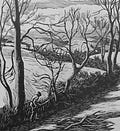


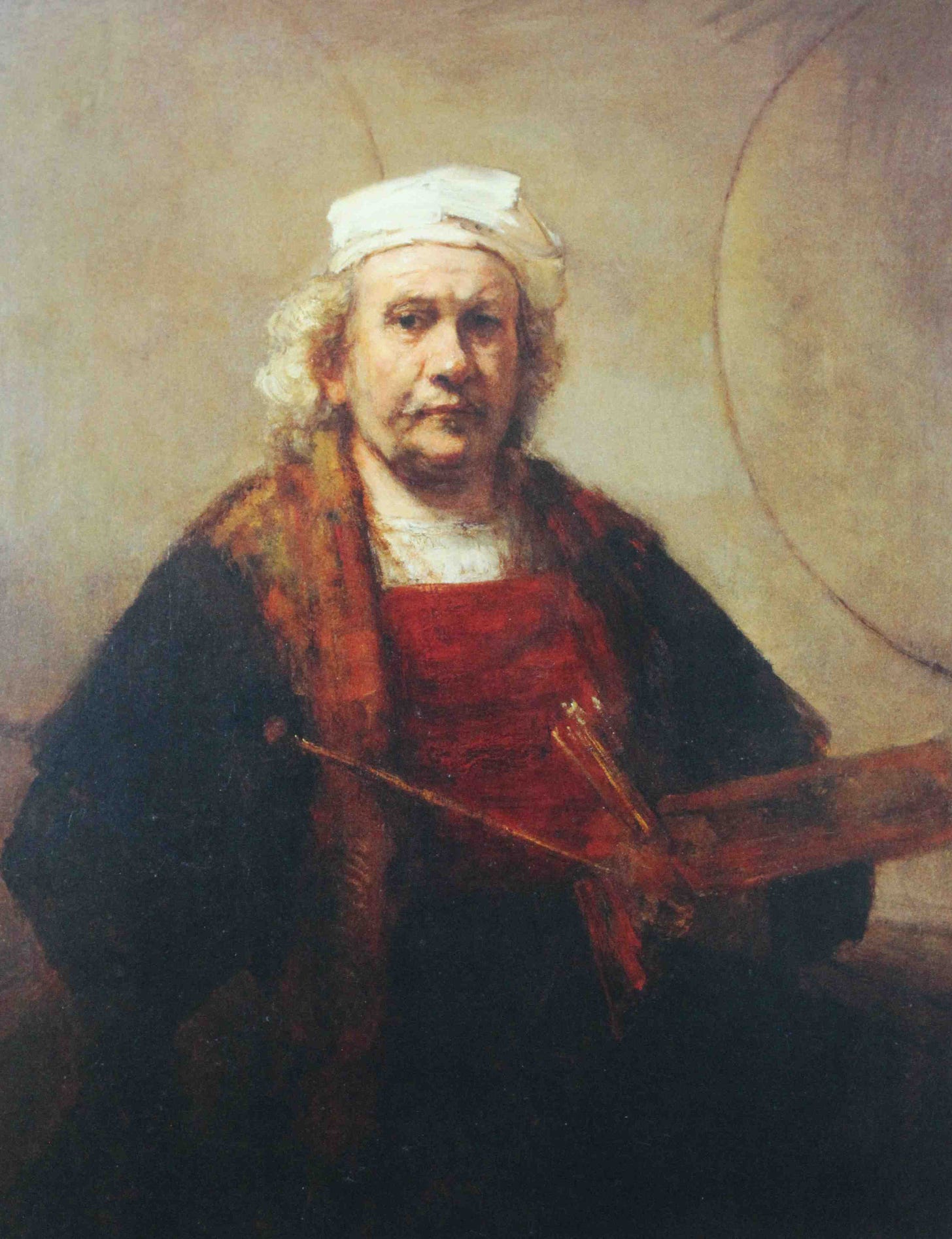
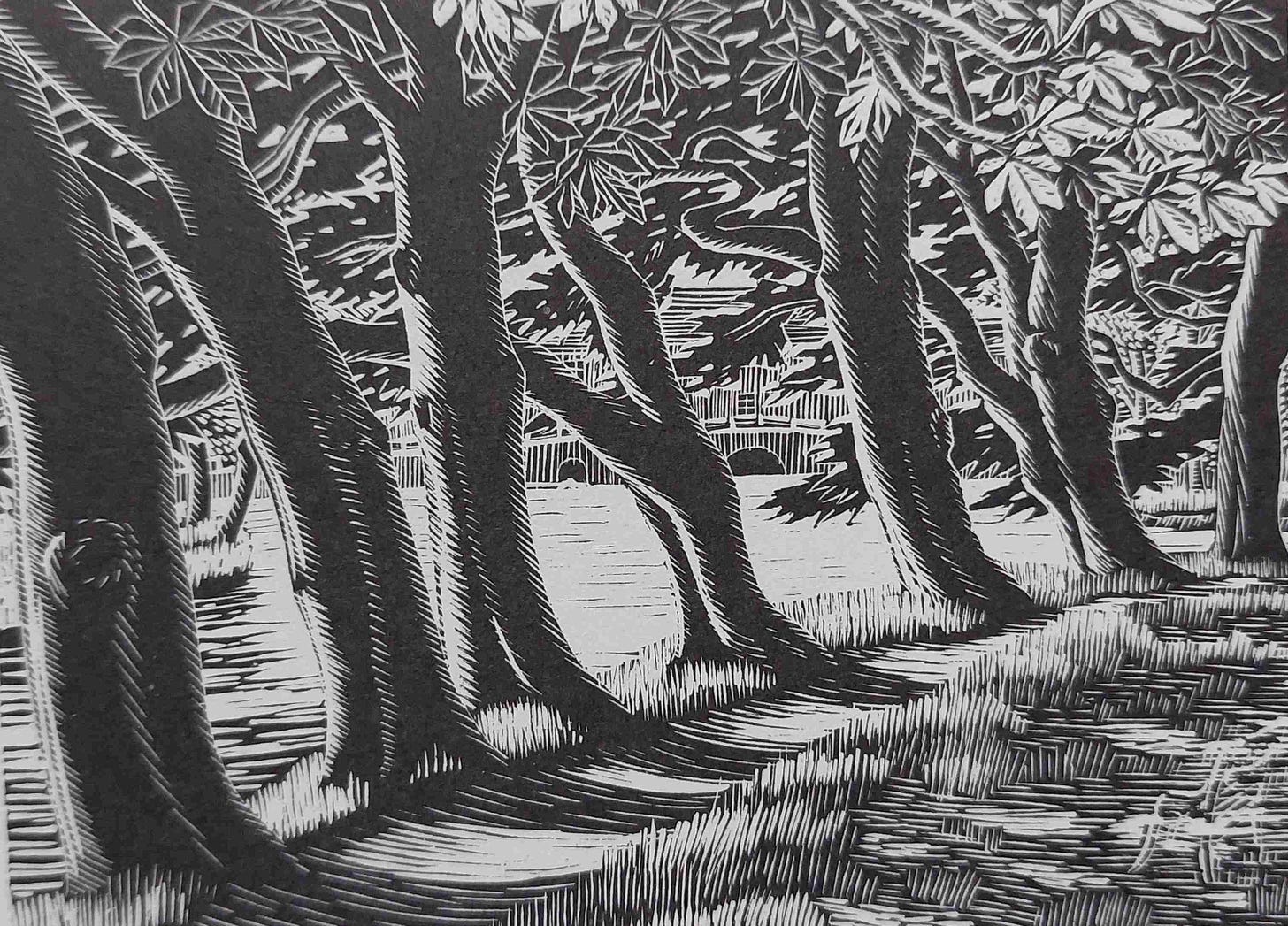
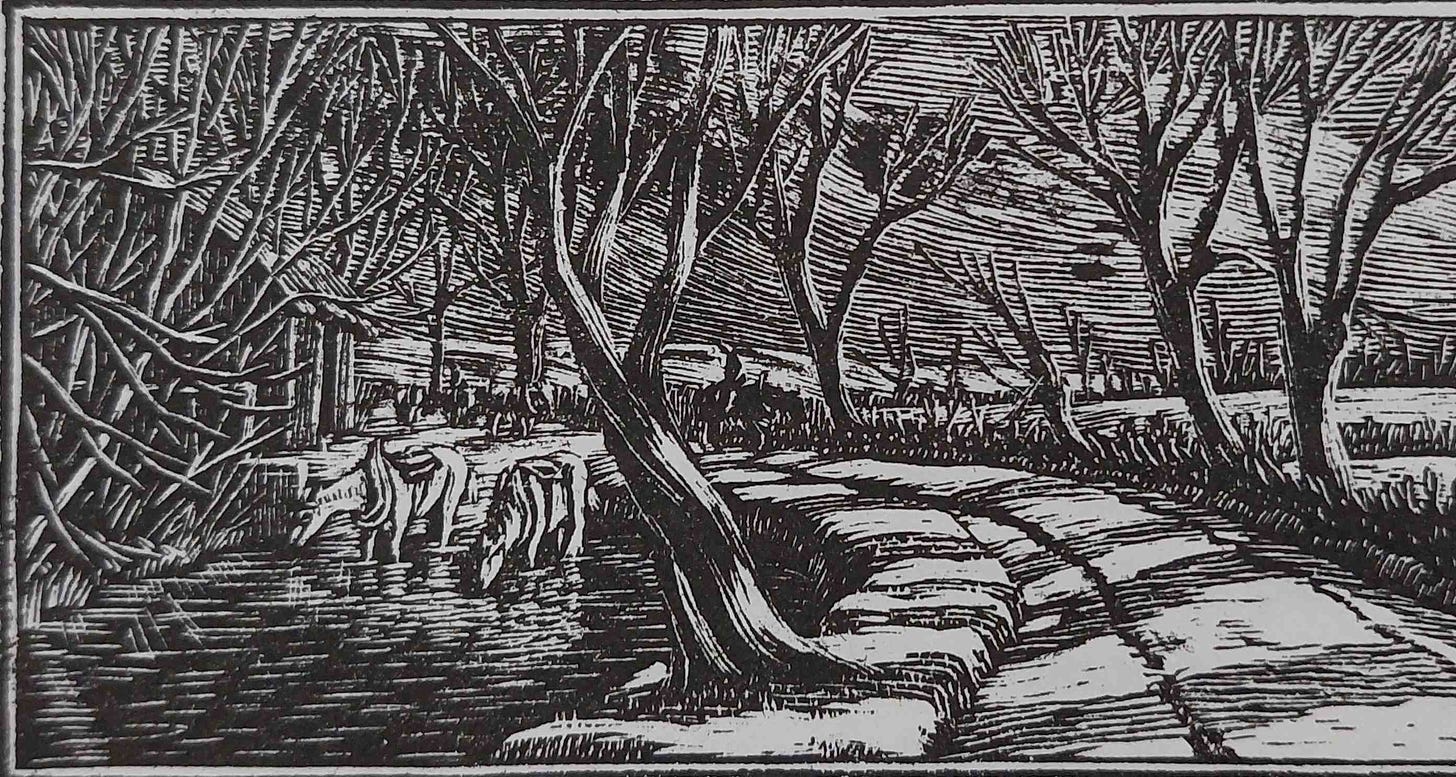
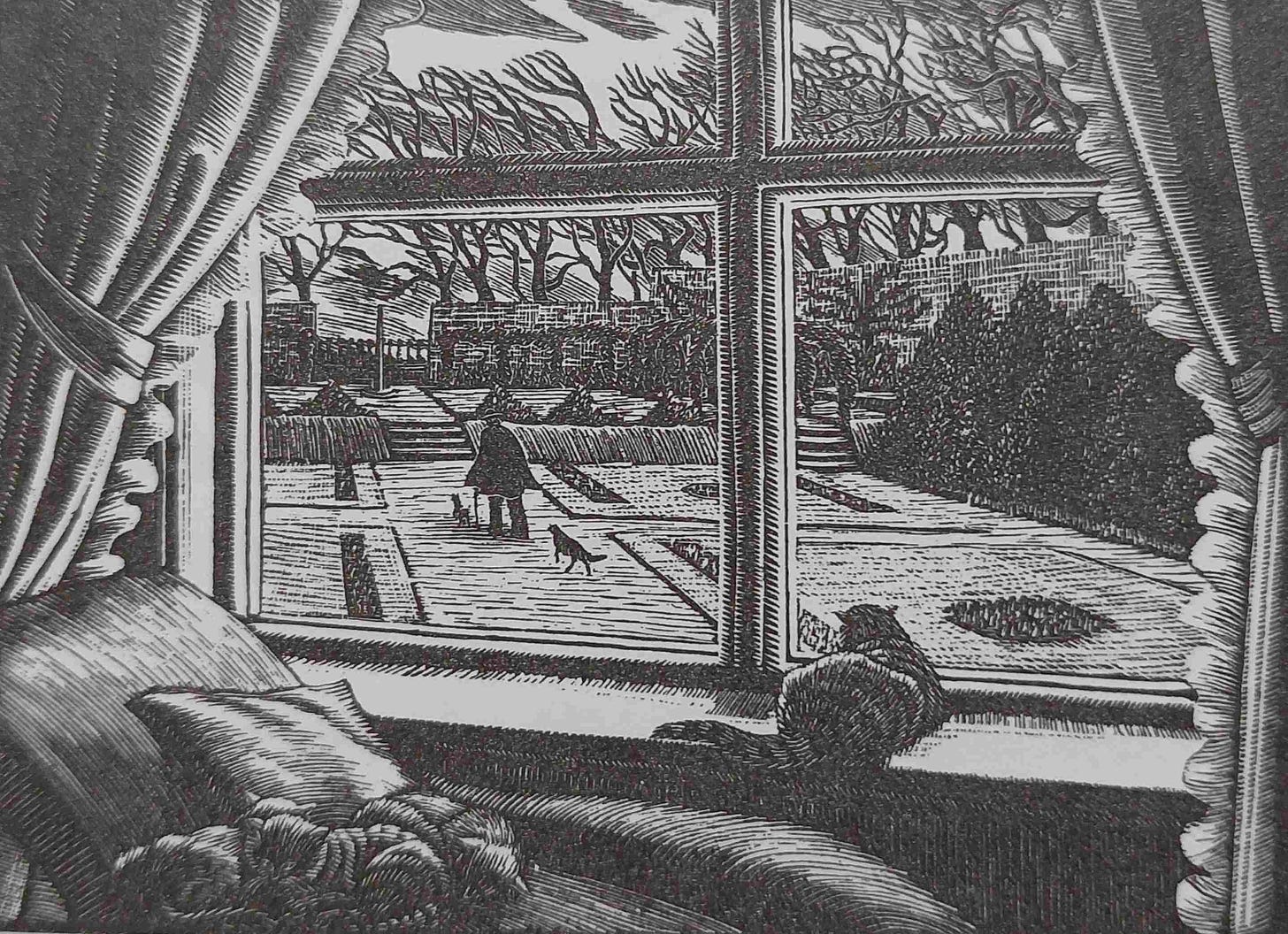
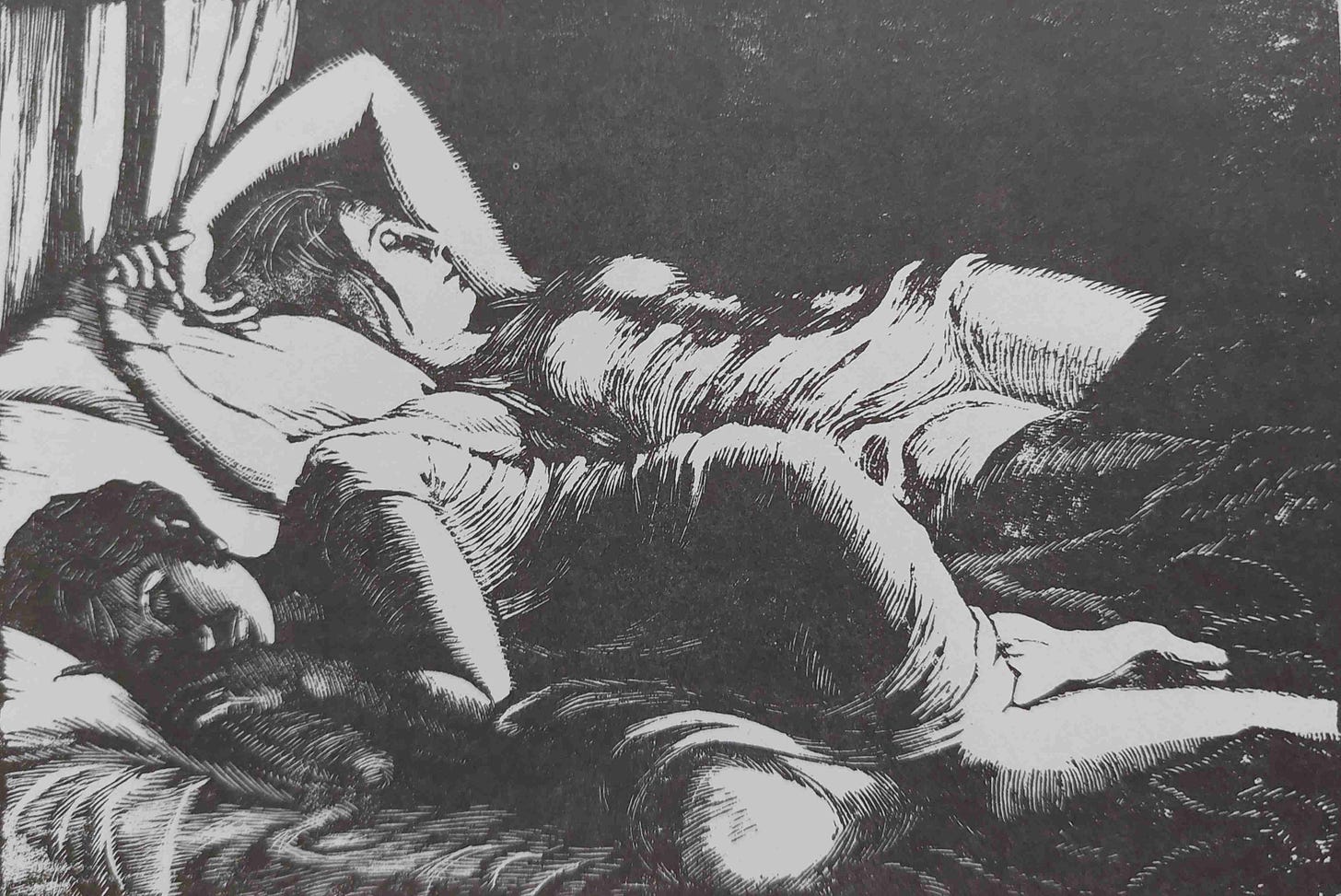
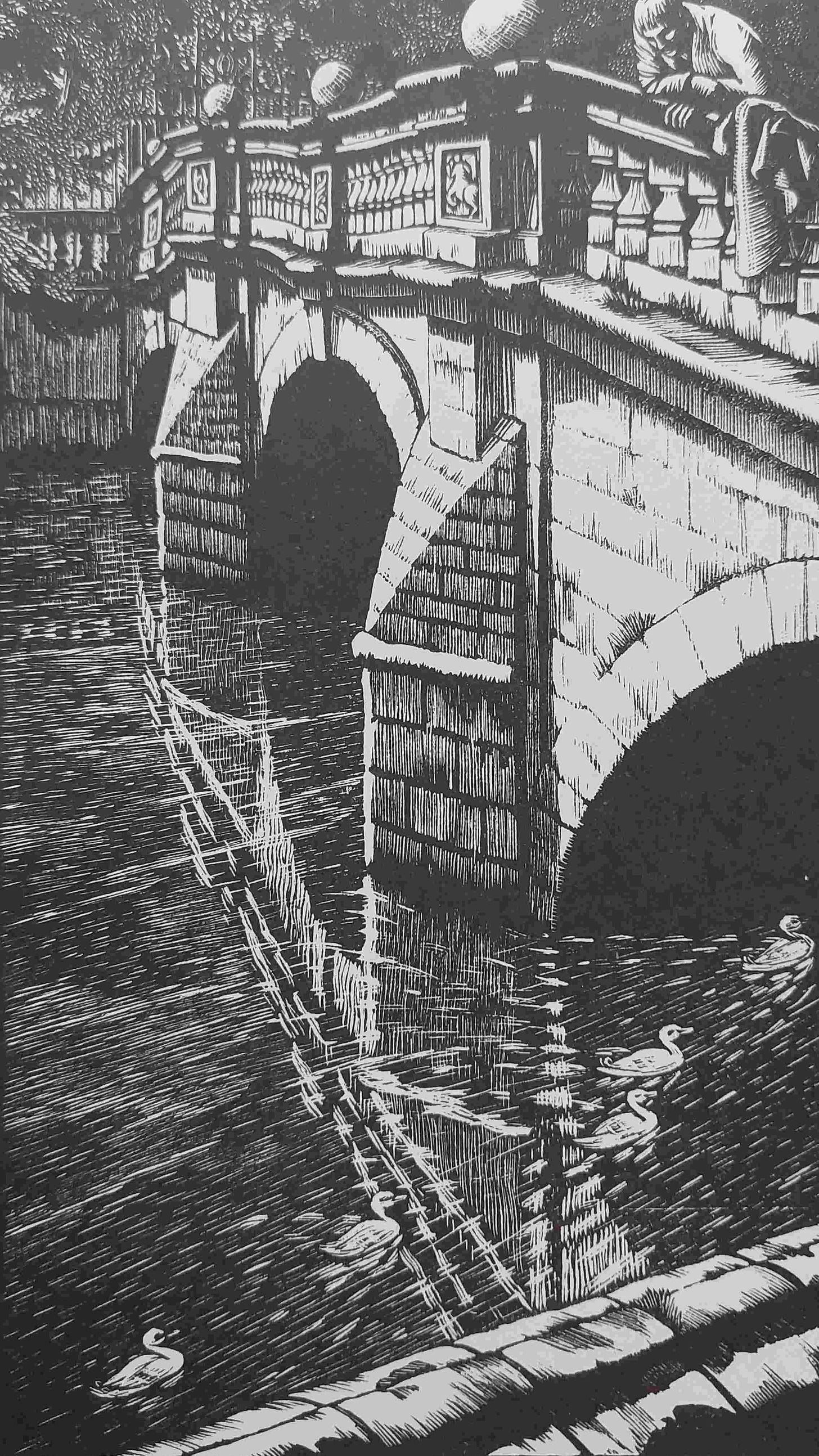
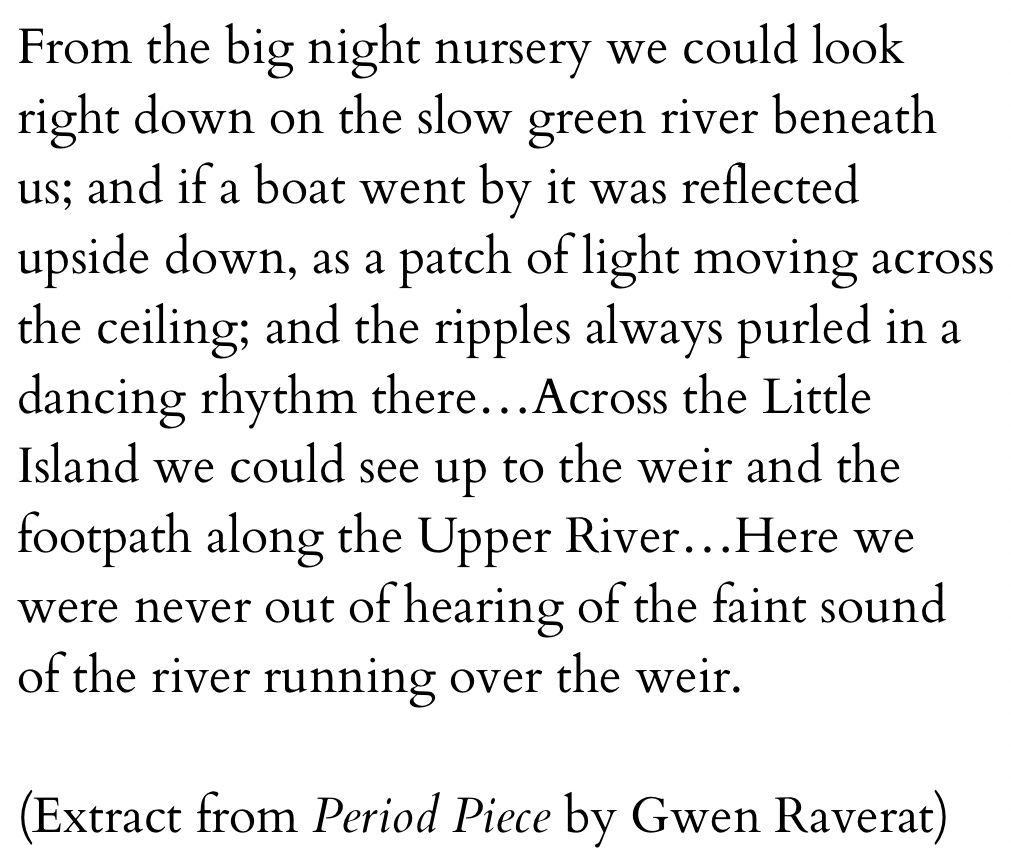
What a wonderful essay … I’ve recently started Period Piece, so lyrical
Thanks for this piece. I love her writing but didn’t know very much about her art, but this glimpse has made me want more